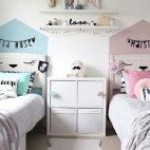Classroom Decoration Ideas For Nursery Students
Creating a stimulating and engaging learning environment is paramount for nursery students. The physical space of a nursery classroom significantly influences a child's ability to learn, explore, and interact. Thoughtful classroom decoration can foster a sense of belonging, spark curiosity, and support the developmental needs of young learners. A well-decorated classroom serves as a silent teacher, subtly reinforcing concepts, encouraging creativity, and promoting a positive attitude towards learning.
Decorating a nursery classroom goes beyond simply making it visually appealing. It involves considering the children's developmental stage, interests, and learning objectives. The decorations should be age-appropriate, interactive, and designed to encourage active participation. A balance between visual stimulation and a calming atmosphere is crucial to avoid overwhelming young children. Furthermore, the decorations should be durable, safe, and easily adaptable to changing themes and learning units.
The following guidelines offer a comprehensive overview of classroom decoration ideas suitable for nursery students, focusing on creating a functional, aesthetically pleasing, and developmentally appropriate learning environment.
Creating a Thematic Learning Space
Thematic learning involves organizing classroom activities and decorations around a central theme, such as colors, animals, seasons, or transportation. This approach provides a cohesive and engaging learning experience for nursery students. By immersing children in a particular theme, educators can reinforce concepts through various activities, including storytelling, art projects, and dramatic play.
Choosing a theme should align with the curriculum and the children's interests. For instance, during the autumn season, a theme centered around fall colors, leaves, and pumpkins can be implemented. Decorations might include colorful leaf garlands, pumpkin-shaped cutouts, and a sensory table filled with autumn-related materials. Similarly, a theme focusing on animals can incorporate animal-themed posters, stuffed animals, and activities that teach children about different animal habitats and characteristics.
When implementing a thematic learning space, it is essential to ensure that the decorations are visually appealing and developmentally appropriate. Utilize bright colors, simple shapes, and clear images. Avoid overcrowding the space with too many decorations, as this can be overwhelming for young children. Instead, focus on creating a few focal points that capture the essence of the theme.
Furthermore, incorporate interactive elements into the thematic decorations. For example, create a bulletin board where children can add their own drawings or artwork related to the theme. Set up a dramatic play area where children can act out scenarios connected to the theme. These interactive elements encourage active participation and enhance the learning experience.
Rotating the themes regularly can keep the classroom environment fresh and engaging. Consider changing the theme every few weeks or months, depending on the curriculum and the children's interests. This will prevent the classroom from becoming stagnant and ensure that the decorations continue to stimulate the children's curiosity.
Incorporating Interactive and Educational Displays
Interactive and educational displays are valuable tools for engaging nursery students and promoting learning. These displays should be designed to encourage active participation and provide opportunities for children to explore and discover new concepts. Examples include interactive bulletin boards, sensory walls, and counting displays.
Interactive bulletin boards can be created using a variety of materials, such as felt, fabric, and Velcro. These boards allow children to manipulate objects and create their own designs. For instance, a felt board with different shapes and colors can be used to encourage children to create patterns and pictures. Similarly, a fabric board with different textures can be used to stimulate tactile exploration.
Sensory walls are another effective way to engage nursery students. These walls typically consist of various materials with different textures, such as sandpaper, bubble wrap, and soft fabrics. Children can explore these materials through touch, which helps to develop their sensory awareness and fine motor skills. Sensory walls can be created using a variety of materials, including recycled items such as cardboard boxes and plastic bottles.
Counting displays can be used to reinforce number recognition and counting skills. These displays can be created using a variety of materials, such as beads, buttons, and colorful blocks. For example, a display with ten colorful blocks can be used to teach children about the concept of ten. Similarly, a display with different sets of beads can be used to teach children about counting and sorting.
When creating interactive and educational displays, it is important to ensure that they are age-appropriate and aligned with the curriculum. The displays should be designed to encourage active participation and provide opportunities for children to learn and explore. Furthermore, the displays should be durable and safe, ensuring that children can interact with them without risk of injury.
In addition to the above, consider incorporating name recognition activities into the displays. A bulletin board with name tags and pictures of each student allows children to practice identifying their own name and the names of their classmates. This activity promotes literacy skills and fosters a sense of community within the classroom.
Utilizing Colors, Lighting, and Space Effectively
The use of colors, lighting, and space plays a significant role in creating a positive and stimulating learning environment for nursery students. Colors can influence mood and behavior, while lighting and space can affect the overall atmosphere of the classroom. By carefully considering these elements, educators can create a space that is conducive to learning and exploration.
When choosing colors for the classroom, it is important to consider the psychological effects of different colors. Warm colors, such as red, orange, and yellow, can be energizing and stimulating, while cool colors, such as blue, green, and purple, can be calming and relaxing. A combination of warm and cool colors can create a balanced and inviting atmosphere. For example, using a light blue or green as the primary color on the walls can create a calming backdrop, while incorporating pops of red and yellow in the decorations can add energy and excitement.
Lighting is another crucial element to consider. Natural light is ideal, as it provides the most balanced and healthy lighting. However, if natural light is limited, artificial lighting can be used to supplement it. Avoid using harsh fluorescent lighting, as it can cause eye strain and headaches. Instead, opt for soft, diffused lighting that mimics natural light. Lamps with adjustable brightness settings can be used to create a variety of moods, depending on the activity.
The arrangement of space in the classroom is also important. Create distinct learning areas for different activities, such as reading, art, and dramatic play. These areas should be clearly defined and well-organized. Use furniture and dividers to create separate spaces without making the classroom feel cramped. Ensure that there is ample space for children to move around freely and engage in physical activities.
Consider adding soft elements to the space, such as rugs, cushions, and beanbag chairs. These elements can create a cozy and inviting atmosphere, making children feel more comfortable and relaxed. Furthermore, incorporate plants into the classroom to add a touch of nature and improve air quality. Plants can also be used as a learning tool, teaching children about plant growth and care.
It is important to avoid overcrowding the classroom with too much furniture and decorations. Clutter can be distracting and overwhelming for young children. Instead, focus on creating a simple and organized space that is easy to navigate. Regularly declutter the classroom to ensure that it remains a clean and inviting environment.
Promoting a Sense of Belonging and Community
Creating a sense of belonging and community is essential for fostering a positive learning environment in a nursery classroom. When children feel valued and connected, they are more likely to participate actively in learning and develop strong social-emotional skills. Classroom decorations can play a significant role in promoting this sense of belonging and community.
One effective way to foster a sense of belonging is to incorporate children's artwork and photos into the classroom decorations. Displaying children's work shows them that their efforts are valued and appreciated. Create a designated display area for student artwork, such as a bulletin board or a clothesline. Rotate the artwork regularly to showcase different students and projects.
Incorporate student photos into the classroom decorations. Create a "Class Family" bulletin board with photos of each student. This display helps children learn each other's names and recognize that they are part of a community. You can also incorporate photos into thematic displays, such as a "My Favorite Animal" display with photos of students and their favorite animals.
Collaborative art projects are another effective way to promote a sense of community. Engage the entire class in creating a large-scale art project, such as a mural or a collage. This activity encourages teamwork and allows children to contribute to something that is displayed in the classroom for everyone to enjoy.
Create a "Kindness Corner" in the classroom. This area can be decorated with messages of kindness and encouragement. Children can contribute to the Kindness Corner by writing notes or drawing pictures for their classmates. This activity promotes empathy and reinforces the importance of treating others with respect.
In addition to visual decorations, incorporate activities that promote social interaction and collaboration. Group projects, circle time, and cooperative games can help children build relationships and develop a sense of belonging. Create a classroom culture where students feel comfortable sharing their thoughts and ideas.
Maintaining Safety and Accessibility
Ensuring the safety and accessibility of classroom decorations is paramount. Decorations should not pose any hazards to children and should be easily accessible to all students, regardless of their abilities. Careful consideration should be given to the materials used, the placement of decorations, and the overall organization of the classroom.
When selecting materials for classroom decorations, prioritize non-toxic and durable options. Avoid using materials that could pose a choking hazard, such as small beads or buttons. Ensure that all paints, glues, and markers are non-toxic and safe for children to use. Regularly inspect decorations for any signs of damage or wear and tear, and replace them as needed.
The placement of decorations is also critical. Avoid placing decorations in areas where children are likely to bump into them or pull them down. Securely fasten all decorations to the walls or ceilings using appropriate hardware. Ensure that decorations do not obstruct doorways, walkways, or emergency exits. Keep decorations at a height that is easily visible and accessible to children, but out of reach of toddlers who might be tempted to pull them down.
Consider the accessibility needs of all students when designing and arranging classroom decorations. Ensure that decorations are visually clear and easy to understand for students with visual impairments. Provide tactile elements for students with tactile sensitivities. Create a clutter-free environment that is easy to navigate for students with mobility issues.
Regularly review and update the classroom decorations to ensure that they remain safe and accessible. As children grow and develop, their needs and abilities will change. Adjust the decorations accordingly to meet their evolving needs. Solicit feedback from students and parents on the safety and accessibility of the classroom decorations.
Additionally, it is important to establish clear rules and guidelines for interacting with classroom decorations. Teach children how to handle decorations safely and respectfully. Emphasize the importance of not touching or pulling on decorations without permission. Reinforce these rules consistently and provide positive reinforcement for students who follow them.

Pin On Classroom Decoration

Classroom Decorations School Specialty

7 Amazing Classroom Decoration Ideas For Kindergarten

10 Amazing Nursery Class Decoration Ideas Pencil Topper Crafts Popsicle Stick House Flower Toppers

Kindergarten Classroom Decoration Ideas Sproutbrite Com

Preschool Decoration Ideas Classroom Design Nursery Class Hanging

Pin By Kumar On Pins You Preschool Classroom Decor Nursery Class Decoration Crafts

Preschool Decoration Ideas Classroom Design Nursery Class Hanging

Play School Class Room Decoration And Wall Charts

7 Amazing Classroom Decoration Ideas For Kindergarten
Related Posts







